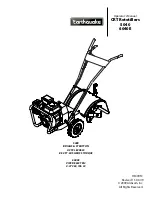
Instruction Manual
K SERIES Cryostorage System
IM: CryoCeK
Revision: 02
Approved by: CB
Page
26
of
87
The liquid level in the cryostorage area is determined by the position of the sensors in the sensor tube
located at the front of the refrigerator.
The liquid level controller operates a fill cycle that adds liquid nitrogen at a low level, fills the
refrigerator slowly to a preset high level, then the controller will close the liquid supply solenoid valve
to stop the fill. This cycle repeats when the liquid level drops to the low level sensor over the
evaporation period time.
The sensor contains four thermistors that can be preprogrammed for any liquid level application.
A separate sensor in the sensor tube is the temperature thermocouple
used to monitor and/or control
the temperature within the cryostorage area.
This thermocouple is normally positioned above the high
alarm sensor to measure the warmest condition in the storage area
at the top of the inventory control
system.
Do not make any
physical intervention to the sensors
:
Sensor and thermocouple positioning to your K SERIES Cryostorage System shall be
carried out only by trained professionals or persons or service centers instructed and
authorized by Worthington Industries.
The liquid phase storage is normally utilized when liquid nitrogen temperatures are required to
maintain stored sample viability and the storage medium is adequate for storage in liquid nitrogen.
When samples are immersed in liquid nitrogen, they will assume the temperature of the liquid -196 ºC.
In a typical liquid phase storage system, the liquid level sensors are positioned to maintain the liquid
level at or below the top level of the inventory control system.
During operation, the upper levels of the inventory control system will at times become exposed as
the liquid level fluctuates.
Exposure to liquid nitrogen may result in physical damage to the lid
:
Care must be taken to ensure that the liquid level remains below the bottom of the
refrigerator lid.
In the vapor phase storage the samples are stored over the liquid, where the liquid nitrogen is still a
very cold refrigerant, but the refrigerator’s interior temperature increases somewhat as samples are
stored higher over the liquid.
Sample transfers can cause fluctuations in temperature:
This temperature fluctuations are not significant in many medicinal and biological
storage applications, and is affected by the amount of product stored in the refrigerator,
the type and size of the inventory control system, and the liquid level in the unit
.
















































